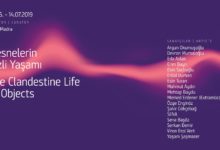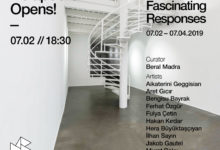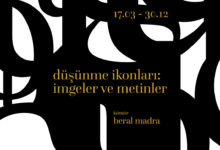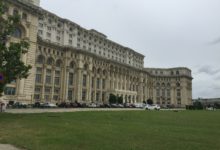John Cage
Sanatçılar/Artists
Lynn Criswell, Peter Downsbrough, Esther Ferrer, Tom Johnson, Stéphane La Rue, Teoman Madra, Sarkis, Michael Snow, Taldans | Mustafa Kaplan – Filiz Sızanlı, Su-Mei Tse, Peri Sharpe & Tolga Tüzün, Ilgım Veryeri Alaca
18.07.2012- 05.09. 2012
100th anniversary of John Cage, one of the most significant composers of 20th century was celebrated all over the world. After Fluxus 50 exhibition Kuad Gallery has seized the opportunity to make a tribute exhibition for John Cage and invited artists from different disciplines who were involved in Cage’s visions and statements.
The most famous and important music piece of 20th century written by John Cage in 1952 is 4’33”. The pianist had to sit in front of the piano without mowing for 4 minutes and 33 seconds. This minimalist approach has given inspiration to many composers until today. With this attitude, Cage created a rupture from the history of classical composition and indicated that the primary act of musical performance was not only making music, but also listening.
Cage was born 1912 in Los Angeles and studied in Pamona College, Cage studied for a short time at Pamona College, and later at UCLA under Arthur Schoenberg with whom he discussed his wish of making radical music. There he also met two protagonists, dancer Merce Cunningham and the painter Rauschenberg. They collaborated at Black Mountain College, creating performances for which Cage wrote compositions. Cage’s ideas about how one can create a different music or how one can transform standard and traditional instruments to create music were also inspired by Marcel Duchamp, who always found ways of discovering music through found objects and from his environment.
In his “Imaginary Landscape No 4″(1951) he used twelve radios played at once and depended entirely on the chance broadcasts at the time of the performance for its actual sound. In “Water Music” (1952), he used shells and water to create a piece that was motivated by the desire to reproduce the operations that form the world of sound we find around us each day. “Cartridge Music” (1960), during which he amplified small household objects at a live performance. Taking the notions of chance composition even further, he often consulted the “I Ching,” or Book of Changes, to decide how he would cut up a tape of a recording and put it back together. At the same time, Cage began to focus on writing and published his first book, “Silence” (1961). This marked a shift in his attention toward literature.
In the ’70’s, with inspirations like Thoreau and Joyce, Cage began to take literary texts and transform them into music. “Roratorio, an Irish Circus on Finnegan’s Wake” (1979), was an outline for transforming any work of literature into a work of music.
Kuad Gallery has invited artists who have worked on Cage or influenced by him. Michael Snow contributed a sound installation, which was earlier displayed in the Pompidou Centre, Sarkis took part with a neon work directly referring to Cage. Peter Downsbrough interfered in the space. Esther Ferrer has sent two portraits of Erik Satie. Tom Johnson, one of Morton Feldman’s students, has contributed with notation patterns. Su-Mei Tse presented a black and white photo for Cage. Papers on Morton Feldman came from Stéphane La Rue. Teoman Madra displayed two light-games photos he made in the 60s. Lynn Criswell presented a work she made on felt. Peri Sharpe and Tolga Tüzün have produced an interactive work referring to Fontana Mix; Taldans showed an exercise video. Ilgım Veryeri Alaca produced an artist’s book.
20.yüzyılın en orijinal bestecilerinden John Cage’in 100. yaşı dünyanın her köşesinde kutlandı. Kuad Galeri de Fluxus 50 sergisinin hemen ardından bu öncü sanatçıyı anmak amacıyla çeşitli disiplinlerden sanatçıların katıldığı bir sergi düzenledi.
Kuad Galeri’deki sergiye katılan sanatçılardan Michael Snow daha önce Centre Pompidou’da sergilenen bir ses yerleştirmesiyle katıldı sergiye; Sarkis doğrudan Cage’e gönderen neonlu bir işiyle yer aldı; Peter Downsbrough her zaman olduğu gibi yine mekana müdahale ediyor; Esther Ferrer iki Erik Satie portresi gönderdi; Morton Feldman’ın öğrencilerinden Tom Johnson notasyon desenleriyle katıldı; Su-Mei Tse siyah-beyaz bir fotoğraf seçti Cage için; Stéphane La Rue’den Morton Feldman kağıtları geldi; Teoman Madra altmışlarda yaptığı ışık oyunlarını sergiledi; Peri Sharpe ve Tolga Tüzün Fontana Mix’e gönderen interaktif bir iş üretti; Lynn Criswell keçe üzerine yaptığı bir çalışmayla yer aldı sergide; Taldans’ın eski bir egzersiz videosu sundu; Ilgım Veryeri Alaca bir sanatçı kitabı hazırladı.





